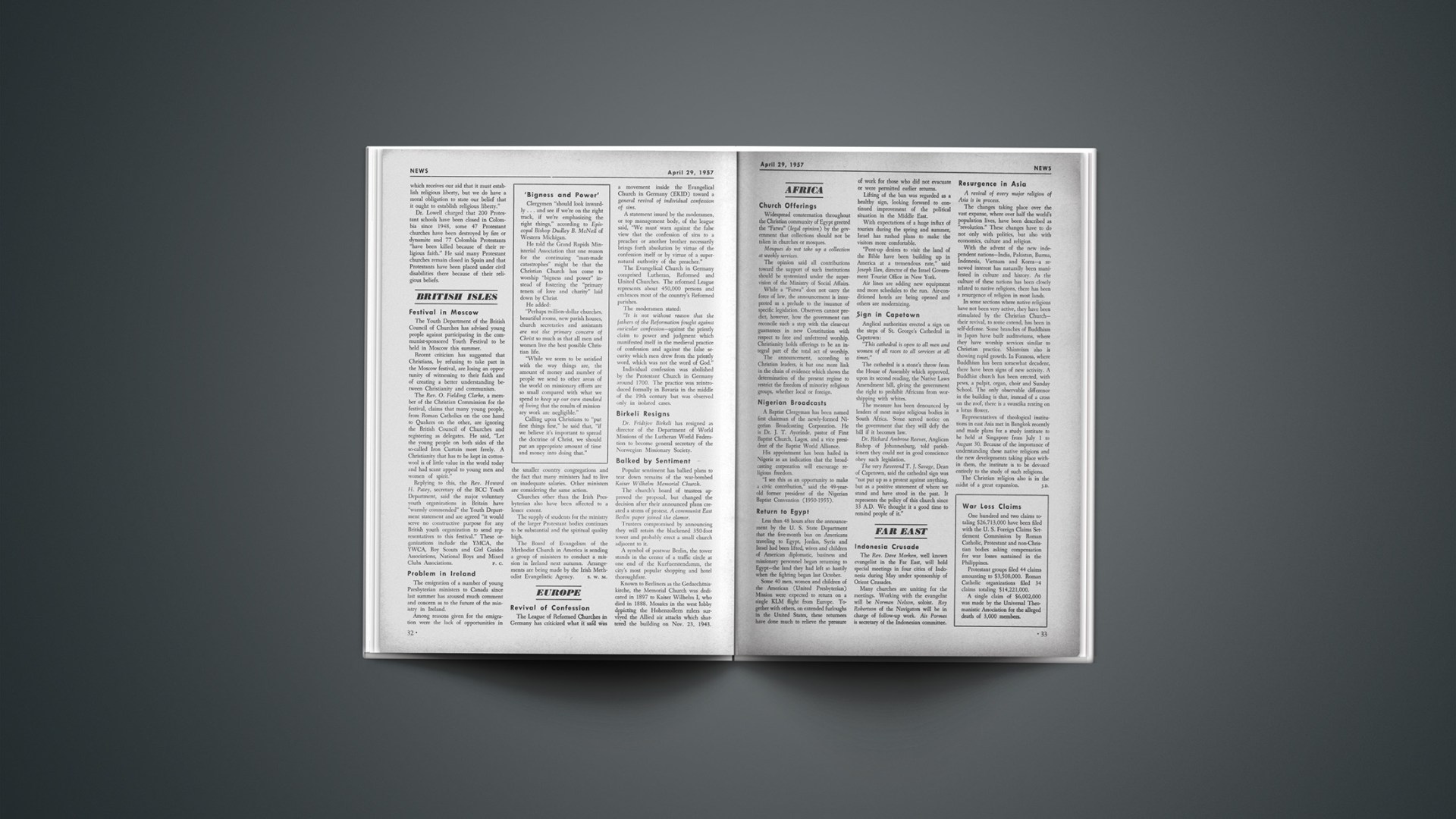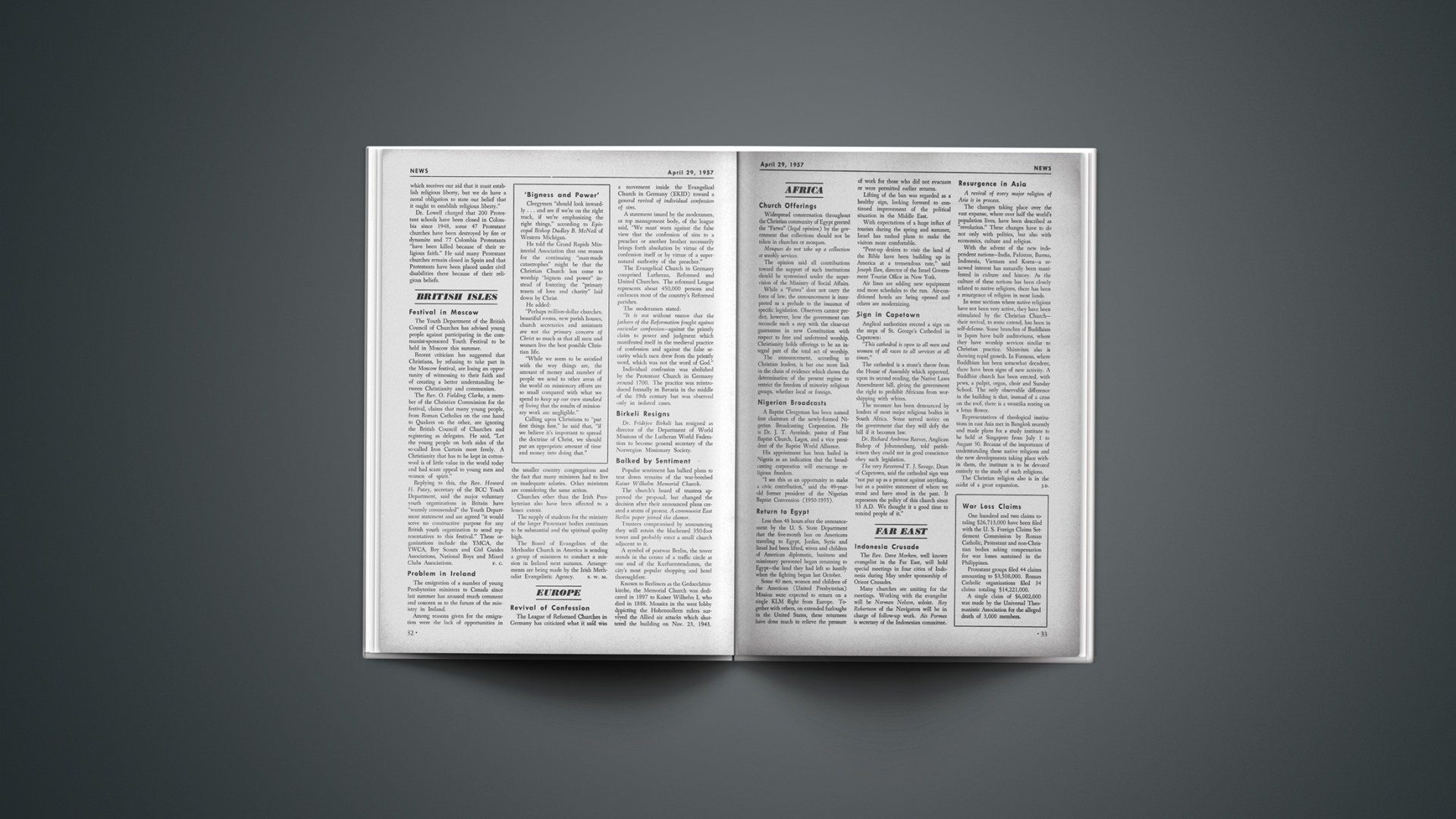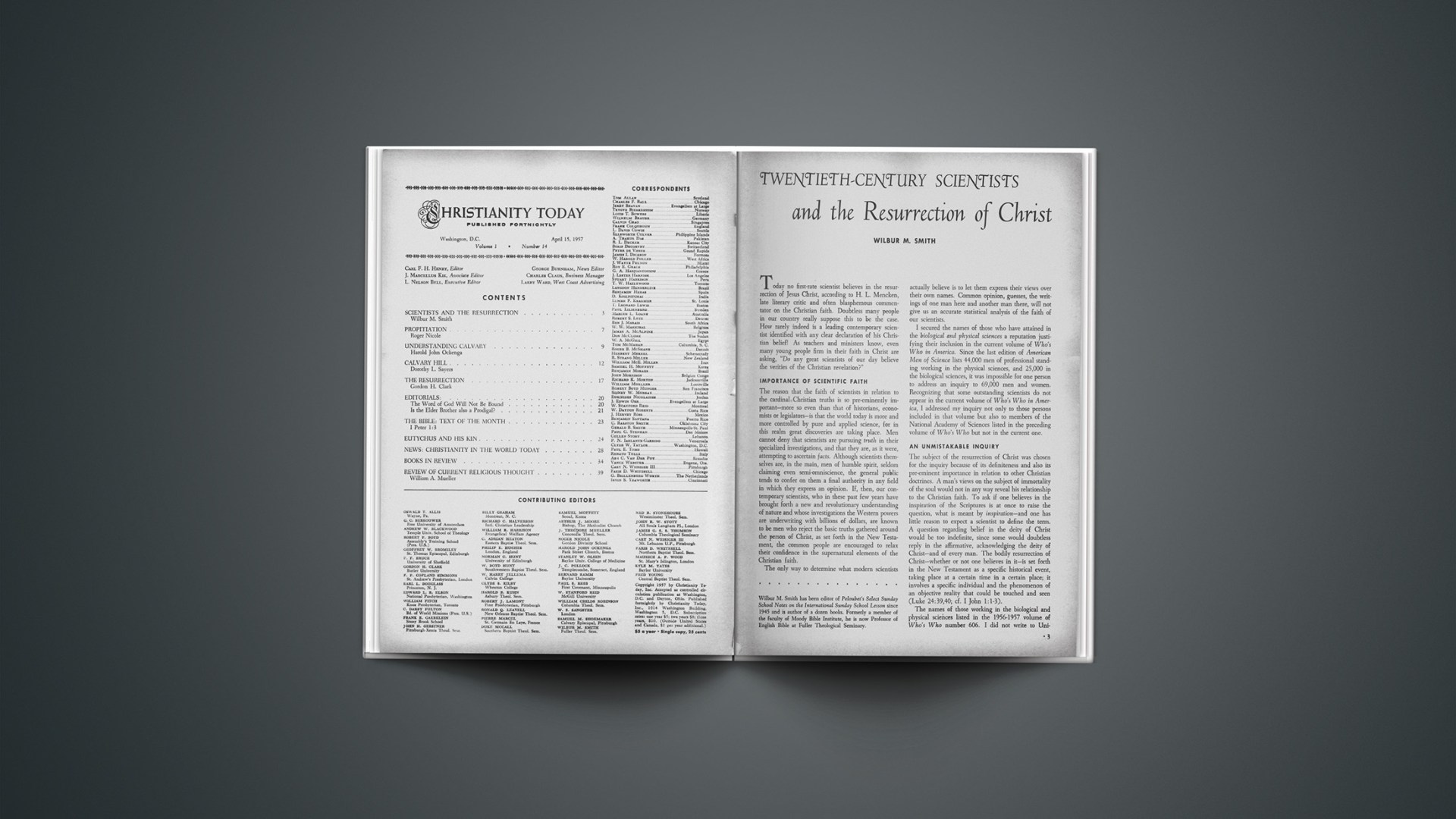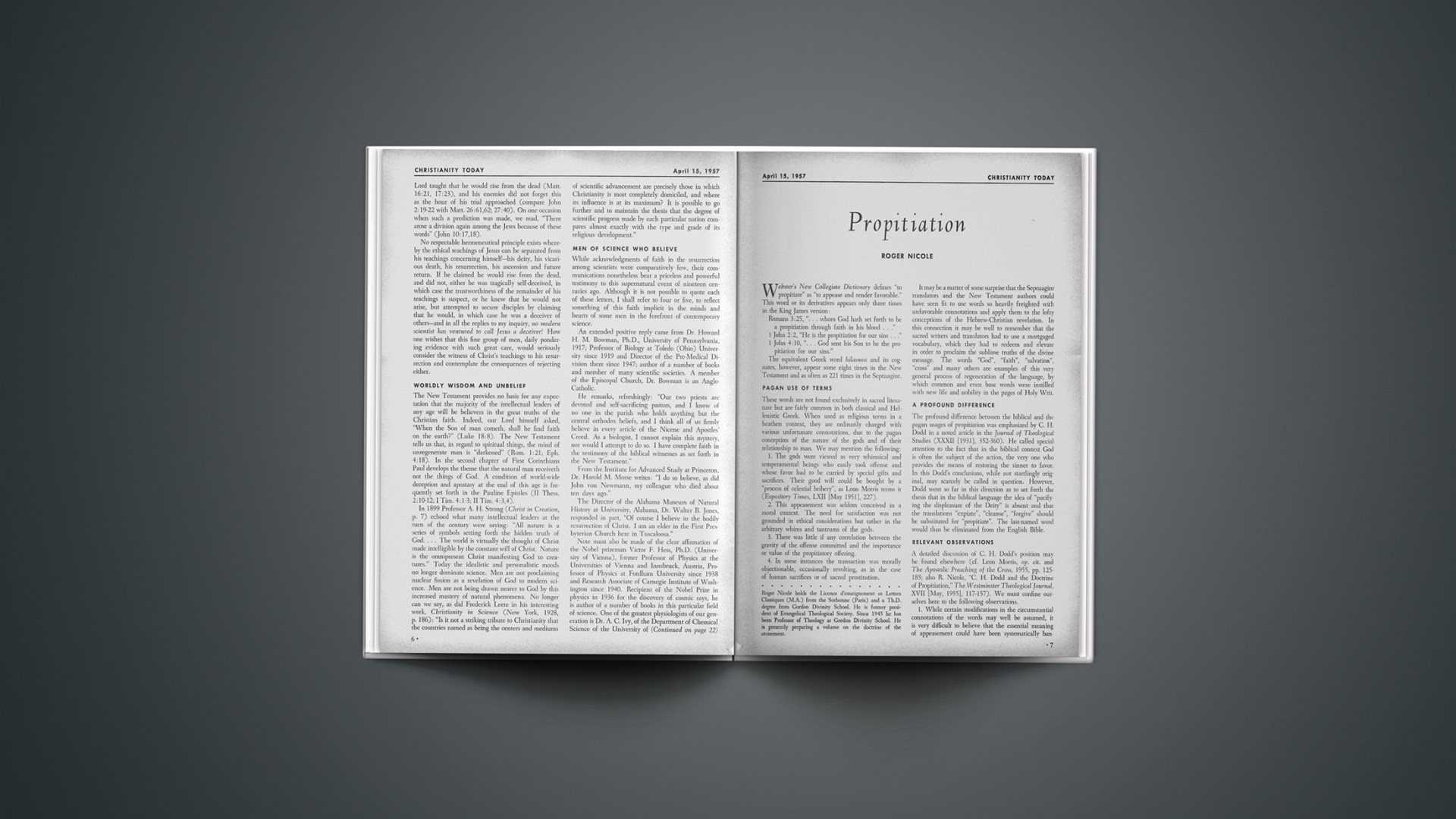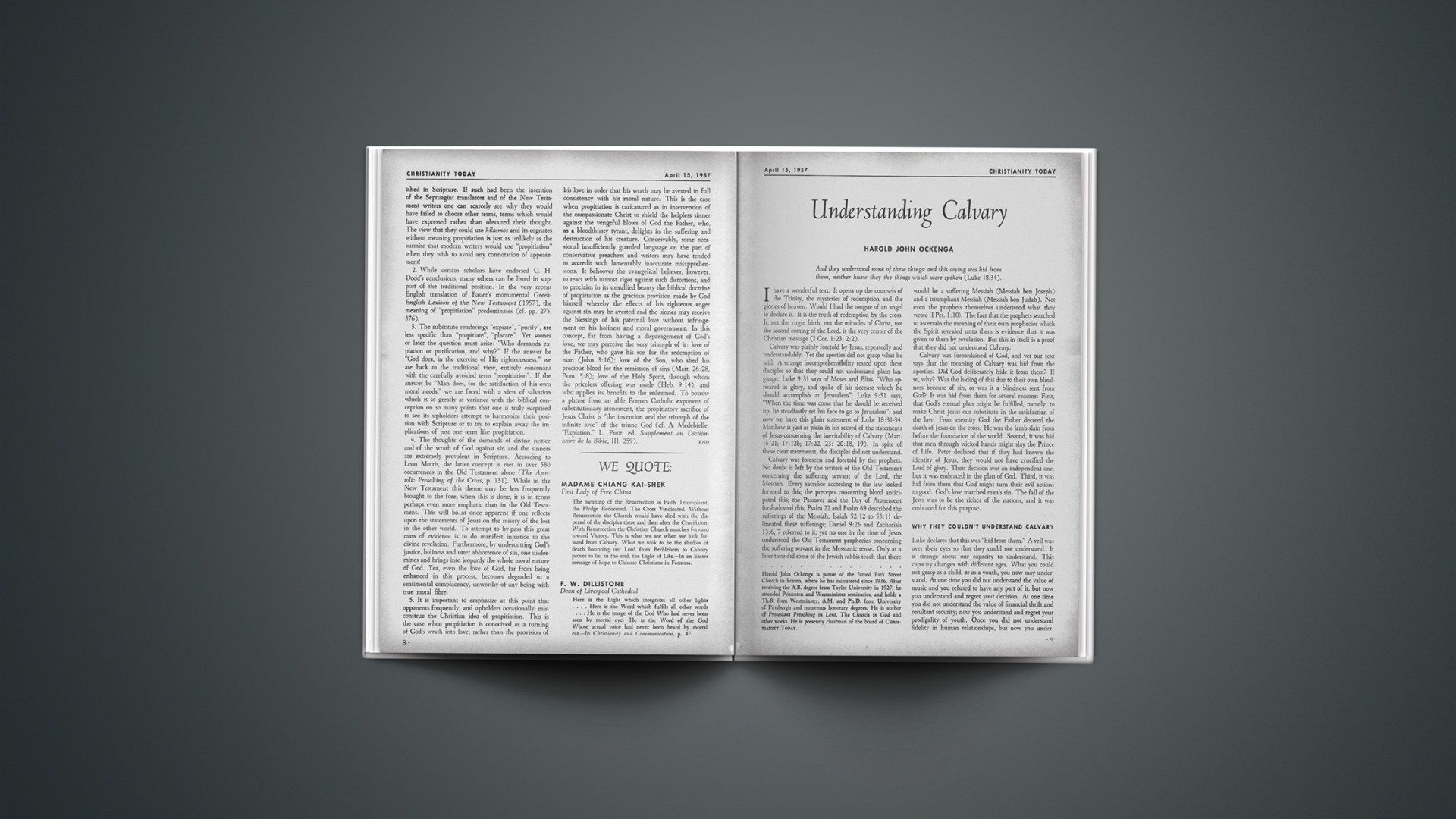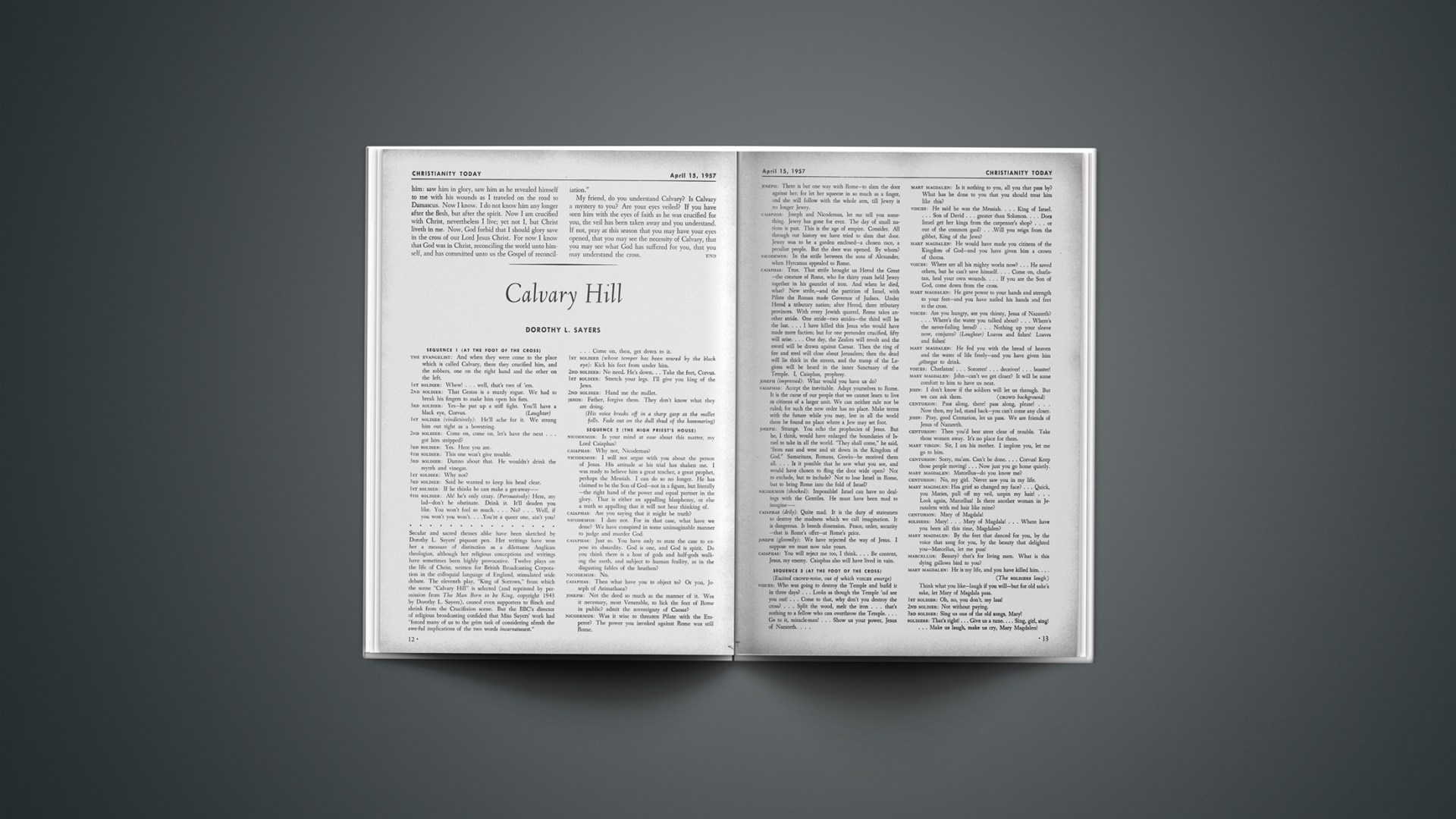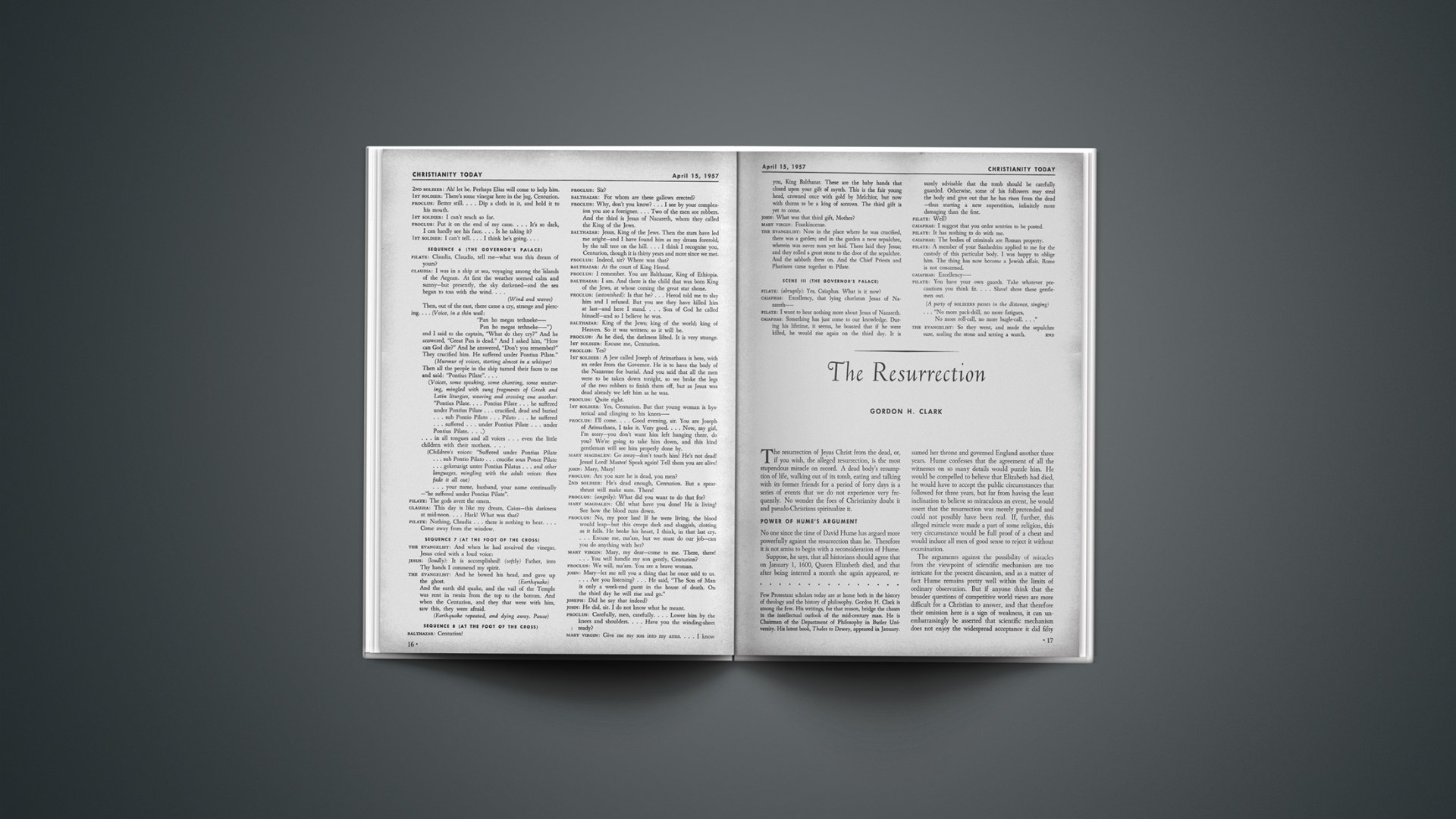Festival In Moscow
The Youth Department of the British Council of Churches has advised young people against participating in the communist-sponsored Youth Festival to be held in Moscow this summer.
Recent criticism has suggested that Christians, by refusing to take part in the Moscow festival, are losing an opportunity of witnessing to their faith and of creating a better understanding between Christianity and communism.
The Rev. O. Fielding Clarke, a member of the Christian Commission for the festival, claims that many young people, from Roman Catholics on the one hand to Quakers on the other, are ignoring the British Council of Churches and registering as delegates. He said, “Let the young people on both sides of the so-called Iron Curtain meet freely. A Christianity that has to be kept in cottonwool is of little value in the world today and had scant appeal to young men and women of spirit.”
Replying to this, the Rev. Howard H. Patey, secretary of the BCC Youth Department, said the major voluntary youth organizations in Britain have “warmly commended” the Youth Department statement and are agreed “it would serve no constructive purpose for any British youth organization to send representatives to this festival.” These organizations include the YMCA, the YWCA, Boy Scouts and Girl Guides Associations, National Boys and Mixed Clubs Associations.
F. C.
Problem In Ireland
The emigration of a number of young Presbyterian ministers to Canada since last summer has aroused much comment and concern as to the future of the ministry in Ireland.
Among reasons given for the emigration were the lack of opportunities in the smaller country congregations and the fact that many ministers had to live on inadequate salaries. Other ministers are considering the same action.
‘Bigness And Power’
Clergymen “should look inwardly … and see if we’re on the right track, if we’re emphasizing the right things,” according to Episcopal Bishop Dudley B. McNeil of Western Michigan.
He told the Grand Rapids Ministerial Association that one reason for the continuing “man-made catastrophes” might be that the Christian Church has come to worship “bigness and power” instead of fostering the “primary tenets of love and charity” laid down by Christ.
He added:
“Perhaps million-dollar churches, beautiful rooms, new parish houses, church secretaries and assistants are not the primary concern of Christ so much as that all men and women live the best possible Christian life.
“While we seem to be satisfied with the way things are, the amount of money and number of people we send to other areas of the world on missionary efforts are so small compared with what we spend to keep up our own standard of living that the results of missionary work are negligible.”
Calling upon Christians to “put first things first,” he said that, “if we believe it’s important to spread the doctrine of Christ, we should put an appropriate amount of time and money into doing that.”
Churches other than the Irish Presbyterian also have been affected to a lesser extent.
The supply of students for the ministry of the larger Protestant bodies continues to be substantial and the spiritual quality high.
The Board of Evangelism of the Methodist Church in America is sending a group of ministers to conduct a mission in Ireland next autumn. Arrangements are being made by the Irish Methodist Evangelistic Agency.
S. W. M.



